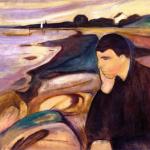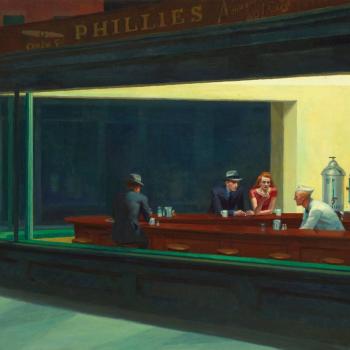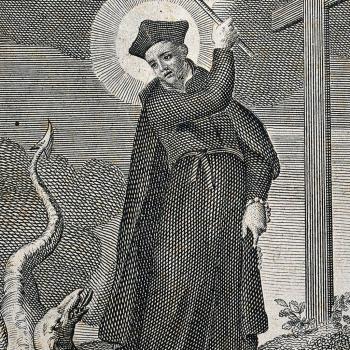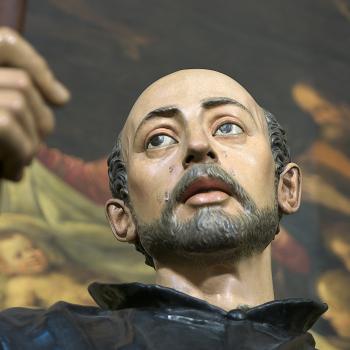We gave our second daughter, Rosemary, the middle name Hope. It’s a direct reference to the Charles Péguy poem, “Hope,” from his anthology God Speaks: Religious Poetry. (Linked is my favorite translation, but you can find a decent free one HERE). I had recently discovered Péguy when my wife was pregnant with Rosemary, and I was enamored with his writing. His poetry reflects a desire to speak to everyone with a simple but masterful use of language. Though he was well on his way to being a man of letters on scholarship at École Normale Supérieure in Paris, he left before graduating. He had come from a peasant family and could not follow the path through university that seemed to stray so far from his beloved French countryside. For me, a novice to poetry, his poems were accessible and provoked a new way of seeing things.
The Child as Sign
Péguy highlights the uniqueness and tenderness of hope in this beautiful poem on Hope (it appears in various forms and translations: “Faith is a faithful wife / Charity is an ardent mother / But hope is a tiny girl.” The imagery of hope as a tiny girl, her innocence and infancy, her daily renewal, and her untroubled smile about what may come made my heart swell for both my daughters. I could fumble through a more precise and nuanced explanation of the theological virtue of hope, but when I look to Péguy, I see hope in my own life. For Péguy, the Word made Flesh permeates everything; the Incarnation is as true as taking a breath. He sees it unfold in the most mundane of things and teaches from a vantage point of our own experience. In “Hope,” God says: “My son had been a tender child, a child fed on milk, / a childhood, a budding, a promise, a pledge; / an attempt, an origin; the beginning of a redeemer; / a hope of salvation, a hope of redemption.” Through his eyes, I see the hope that comes from a child whose life is a sign of eternity.
Origin and Destiny
Explanations of who my daughter is through biology and psychology can be fascinating and helpful, but they are ultimately inadequate. Even these explanations are rooted in a Mystery that is beyond everything. Only by acknowledging this can I begin to approach an answer to the question, “Where do you come from?” This fills me with hope, that I have to stretch out into faith if I want to take this question seriously. When this question is with me, each passing day brings out more and more of her that I know I did not give her, but rather points to an origin rooted in Mystery. And if her origin is rooted in Mystery, it is the most reasonable thing to conclude that her destiny is rooted in that same Mystery.
A Sign from Another
To be sure, Rosemary Hope screaming at 2:30 in the morning because her pink llama with unicorn horn (why?) fell off her bed and she is convinced that we are neglecting our God-given parental obligations to retrieve it for her—this does not fill me with profuse joy I can hardly contain. But the fact I gave her nothing of her personality, none of her desires, no input on how she looks or her talents makes it clear that she is not merely an extension of me. The way she carefully approaches coloring in a picture or carelessly bolts for an ocean wave, all of these things are signs that she has been given by Another and ultimately signs that we belong to Another.
Hope Through What Is Given
“So faith, hope, love remain, these three; but the greatest of these is love” (1 Cor 13:13). But perhaps the most neglected of these is hope. The signs of hope are so common, so natural that we miss them. In this same poem, Peguy compares hope to a little April bud, hidden among a mighty oak: “Faith is a great tree, and oak rooted in the heart of France / And under the wings of that tree, Charity, my daughter Charity shelters all the woes of the world / And my little hope is nothing but that little earnest of a bud which shows itself at the beginning of April.”
And so I overlook the most powerful sign of hope: that all the world is given. My children, my life, the capacity to see this and ask questions—I can give none of it to myself. All the walking and talking and choices and tantrums of Rosemary are signs of a Creator. Her questions are her own. Her affection for Jesus is her own. I can offer her long-winded explanations of our Faith until her eyes glaze over (and they do), but I cannot make her love Jesus and look forward to Heaven (and she does)—that comes from something far beyond me. “[Jesus] said, ‘This is how it is with the kingdom of God; it is as if a man were to scatter seed on the land and would sleep and rise night and day and the seed would sprout and grow, he knows not how. Of its own accord the land yields fruit, first the blade, then the ear, then the full grain in the ear. And when the grain is ripe, he wields the sickle at once, for the harvest has come.’” (Mark 4:26-29).
The Bud of Hope
Péguy knows all this well. “Hope is the shoot, and the bud of the bloom / Of eternity itself.” But the little bud is easy to miss. I need reminders often. There are many nights that my wife and I slog through the bedtime routine: snack, brush teeth, wash up, second snack, story, etc. We then start the kids’ prayer time with our normal set of prayers with that same mechanical determination to finish the jobs of the evening. Every so often, Rosemary excitedly interjects and asks to take out her rosary to pray with Mary. And I say, “Yes,” full of hope.











